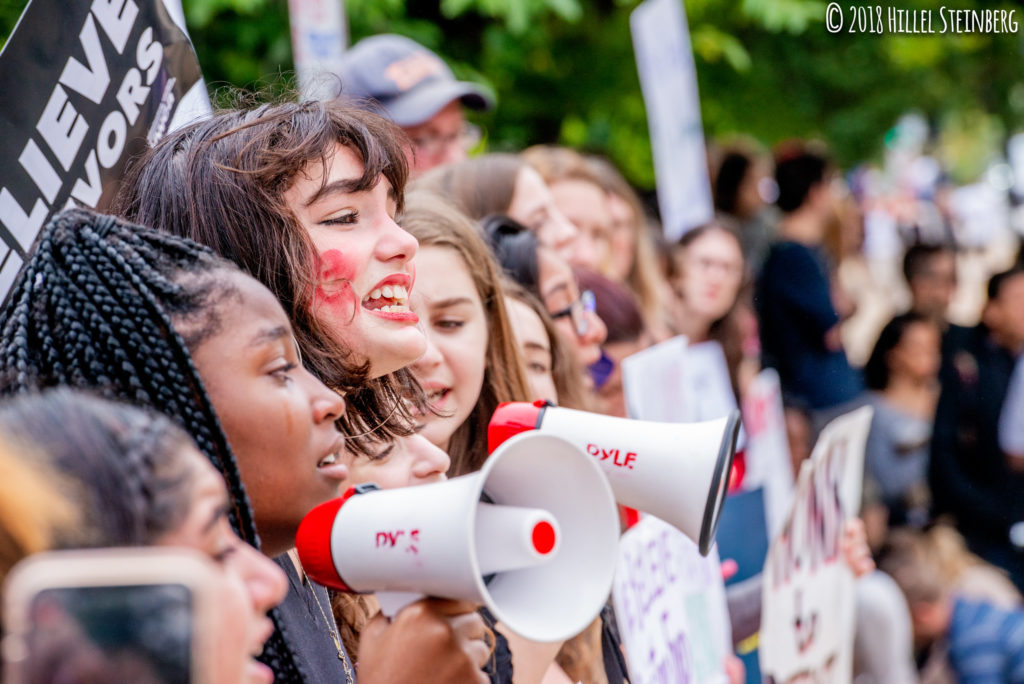Conventional wisdom suggests that the liberal attitudes about sexual orientation and gender identity held by Millennials and Generation Z will propel social transformation. But our new study in Sociological Science finds that young people hold more conservative gender attitudes than typically assumed.
We analyzed 40 years of responses to a nationally representative sample of high school seniors. The Monitoring the Future data was revealing.

Continued gender inequality at home and at work is frequently explained by a lack of “family-friendly” policies. If we had equal pay, paid parental leave and affordable childcare, men and women would more equitably share work and home responsibilities. (Or so the thinking goes.) But these structural constraints are not the only barrier to manifesting equitable relationships. While modern young people are more open to a wide array of division of labor arrangements than young people in earlier decades, and today’s youth increasingly found all types of arrangements acceptable for their future selves, our findings showed just how sticky attitudes about gender continue to be.
“Imagine you are married and have one or more pre-school children,” one question from our data posits. “How would you feel about each of the following working arrangements?” There were six choices: husband works full-time, wife doesn’t work; husband works full-time, wife works about half-time; husband doesn’t work, wife works full-time; husband works about half-time, wife works full-time; both work about half-time; and both work full-time. Youth decided whether each arrangement was not at all acceptable, somewhat acceptable, acceptable or desirable.
Division of labor preferences reflect beliefs about appropriate roles for men and women, and youth persistently prefer women to be primarily responsible for childcare and housework. A conventional arrangement—consisting of a husband working full-time and the wife staying at home—remained the most desired division of labor scenario among high school students. While there was a substantial decline in the desirability of a conventional arrangement initially, declining from 44 percent in 1976 to around 25 percent by the 1990s, there’s been minimal change since then. Fewer than five percent of youth desired gender atypical arrangements—scenarios in which the husband does not work or works part-time and the wife works full-time.
Some may argue that a minuscule desire for men’s caregiving is the wrong bar to measure support for equal relationships. Perhaps youth can’t envision a positive model about what men’s time at home might look like. There are sound reasons people might reject gender atypical divisions of labor, those that prioritize women’s employment while men stay at home. When these types of scenarios happen, it is usually because men are struggling—layoffs, disability and sometimes because these men are terrible partners. But men not adopting behaviors typically seen as feminine is an important mechanism contributing to the stalled gender revolution.
Even a more mainstream measure of gender equity—both parents working full-time—does not bode well among young people. In 2014, the last year of our data, only 11 percent of young people desired a dual-earner arrangement. Our findings coincide with other research on teenagers’ gender attitudes: a 2018 poll of U.S. adolescents in which more than 90 percent of youth said they support gender equality, but more than half still said they were more comfortable with women caring for children and family.
What might explain this greater openness to multiple types of arrangements but lackluster support for mothers’ and fathers’ equal caring responsibilities? The economy may play a greater role in evolving gender attitudes than many realize. Increasing acceptance of mothers’ labor force participation could be accounted for by changes in families needing two incomes to make ends meet. As wages have stagnated and economic inequality has increased, families can better weather economic storms by having both parents in the labor market; at the same time, these economic necessities may not be enough to undermine conventional gender beliefs.
Despite the hand-wringing about luxurious avocado toast, Millennials and Generation Z are attempting to stay afloat among staggering amounts of student loan debt, rising housing costs and fewer opportunities for economic mobility. Anxiety about covering rent may supersede abstract feminist goals. Intensification of economic inequality is also associated with a rise of men’s overwork and intensive mothering, a time consuming parenting style. This economic context reinforces and exacerbates gender norms by making dual-earning partnerships more difficult.
If young people desire conventional arrangements, you may think we should be advocating for policies that make them possible—but the changes brought about by women’s labor force participation have advanced women’s well-being in multiple ways, including the power that derives from having their own incomes. Women have more choices about when to enter relationships and when to leave bad ones.
There are consequences to maintaining the status quo: Women who disproportionately shoulder the burden of family duties while contributing to the family budget, report lower relationship satisfaction, greater stress and exhaustion and increased drug and alcohol use. There are also many reasons why finding ways to support equal partnerships are good for families. When men do their fair share, relationships are more stable and couples report greater relationship satisfaction, sexual intimacy and better sleep. Progressive gender attitudes among adolescent boys may also reduce sexual and partner violence.
While young people may not embrace gender equality to the extent many might assume, we’re not suggesting feminism is dead. Gender attitudes are much more complicated than that and these findings need not detract from the substantial progress that has already been made. But as we look forward to a new decade, we need to understand all the obstacles to advancing gender equity in order to fully address them.
Our findings signal that we can’t sit back and count on young people to deliver gender equity—and if the underlying gender attitudes of younger people remain conventional, then policies like paid parental leave are unlikely to bring about gender equity, even if they have many other beneficial outcomes for families that warrant their implementation. Feminist advocacy goals must incorporate economic justice, advocate for family-friendly policies and champion policies that explicitly aim to promote gender equality.





